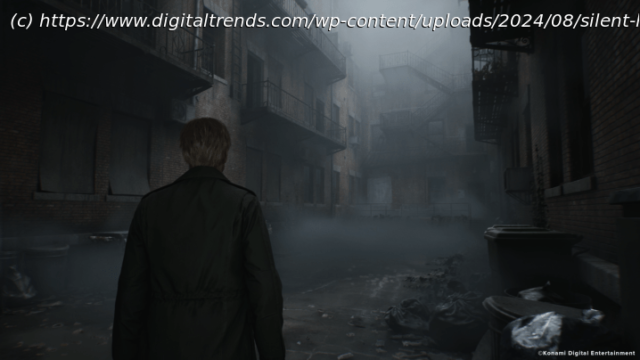After three hours with Silent Hill 2, we’re no longer skeptical about the upcoming remake.
When Konami first announced that it was remaking the horror classic Silent Hill 2, I was an immediate skeptic.
The original game is one of those wholly unique creative visions that just felt impossible to replicate. How could a studio intentionally capture the stilted voice acting or jerky animations of the original, aesthetic decisions that gave that game an off-kilter unease that made it so special? I especially had reservations about The Medium developer Bloober Team taking up that task, as it’s a studio whose games have occasionally felt like they were trying a bit too hard to recreate an atmosphere born from PS2-era tech limitations.
After playing the first three hours of Bloober’s take on Silent Hill 2, my fears have melted away. It’s immediately clear that the studio understood the difficult assignment ahead of it. The remake keeps a firm handle on the visceral eeriness of one of the horror genre’s greatest games, all while expanding it in ways that are careful not to trounce on its signature mystique. While it’s sure to be divisive no matter what, the naysayers may be in for one heck of a surprise this October.Return to Silent Hill
My lengthy demo covers a lot of ground, from the very opening scene through some puzzling in the unnerving Blue Creek Apartments complex. The similarities and differences are immediately clear from the first few minutes of that stretch. Its Unreal Engine 5 visual upgrade makes a splash right away as I get more nuance from James Sunderland’s tortured little face. It’s almost uncanny. When I make my way to the town cemetery and meet Angela, an iconic sequence from the original, it’s almost otherworldly. These hyper-detailed characters stand out in front of the cloud-like fog that billows behind them, like they’re floating in another universe.
I’m not sure what to make of it at first, but I’m slowly sold on it the deeper I get into the story. What makes those moments work is the remake’s new voice cast. Bloober Team worked with an experienced team of professional actors here, which is a notable difference from the hauntingly wooden performances of the original game. I worried that this approach could drive the script into overacted melodrama that’s lacking its weird edge, but that’s not the case. The cast is just intentionally stilted enough to make everything feel off-center. In an interview with Digital Trends, lead producer Maciej Głomb explained how Bloober approached the tricky task of recreating the original’s eerily unusual performances.
“We understood that the [off-kilter] feeling was a big part of the original, but at the same time, we wanted to flesh out the emotions of the characters much more,” Głomb tells Digital Trends. “Using professional actors allowed us to go much deeper into the psychology of those characters and create those arcs of their specific details of their emotions changing throughout the game. Recreating that feeling with the new actors wouldn’t be impossible, but it would be very hard to do it in a good way and not feel weird. You’ll never get the same feeling unless you use the same voice-overs, which wasn’t possible with the flow of the game.”
I can especially feel that philosophy at play when I meet Eddie. The baseball cap-wearing character is perhaps the most unsettling cast member in the original game due in no small part to an alien voice performance. The version of Eddie I met here — cowering in a dilapidated apartment — leaves an impression too. He’s more manic, laughing and crying through vomiting fits. Though it’s a more controlled performance from a professional actor, there’s still something off about it that makes me feel like I’m on another planet. Creative director Mateusz Lenart explains that moments like this mark the biggest difference with the remake’s performances, which take physicality into play.






